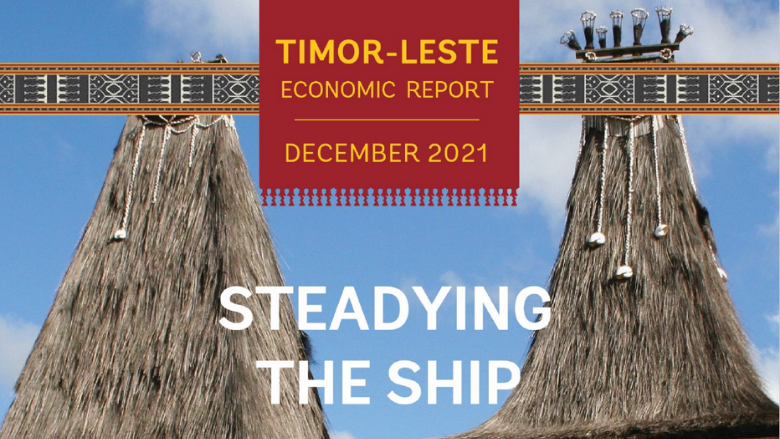
The Timor-Leste Economic Report provides an up-to-date assessment of key economic developments, presents the World Bank's forecasts and outlook for Timor-Leste and provides an in-depth examination of selected policy issues relevant to Timor-Leste
Key Findings:
- Atter dual COVID-19 and natural disaster shocks, available data points to some signs of economic recovery. Receipts from sales and excise taxes rebounded while household credit expanded as government executed a nominally higher budget in Q2 2021.
- The COVID-19 situation has begun to improve. The pace of vaccine rollout continues to accelerate as nearly 71 percent of the eligible population has received one dose and about 46 percent are fully vaccinated. Nevertheless, there is considerable disparity of vaccine coverage.
- The Government collected 11.3 percent less domestic revenue during the first half 2021 compared to 2020. Public spending grew by 20.3 percent, but capital spending remains relatively low.
- Inflation increased to 3.6 percent in the second quarter of 2021, the highest reading in eight years, driven largely by rising food, beverage, alcohol, and tobacco prices. Private sector credit growth doubled to nearly 20 percent, driven by household credit. Outlook and Risks
- Non-oil GDP contracted by 8.6 percent in 2020 but is projected to recover by 1.6 percent in 2021 on account of base effects and COVID-19 related fiscal expansion.
- Uncertainty surrounding the growth outlook is high, given that COVID-19 is still evolving locally and globally. Rapidly expanding vaccination coverage is key to containing the pandemic and economic recovery.
- Despite a reduced allocation and more coherent budgeting, allotment for recurrent spending in 2022 budget grows by 24 percent than the 2015-2019 average. In contrast, sustainable sources of revenue are set at nearly 40 percent lower than the recurrent spending. Fiscal deficit is projected to narrow in 2022, but still rather elevated at around 40 percent of GDP.
- The COVID-19 crisis came on top of another period of low growth, suggesting deeper structural problems. Delays in advancing the structural reform agenda could hamper growth, competitiveness, and employment. Raising more fiscal revenues, the special focus of this issue, is part of this agenda.
"The COVID-19 crisis came on top of a period of low growth, suggesting deeper structural problems in the economy. Advancing the structural reform agenda can improve growth, competitiveness, and employment. Raising more fiscal revenues, the special focus of this issue, is a key step in ensuring a sustainable future for Timor-Leste."